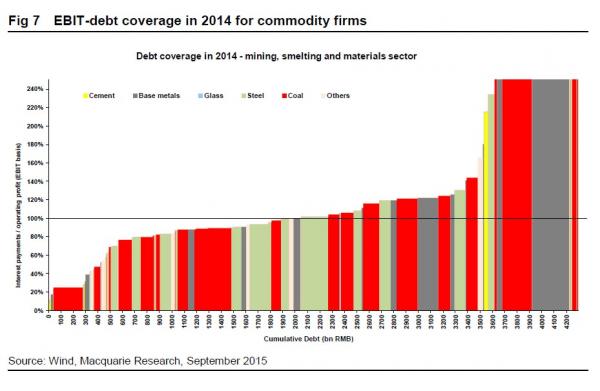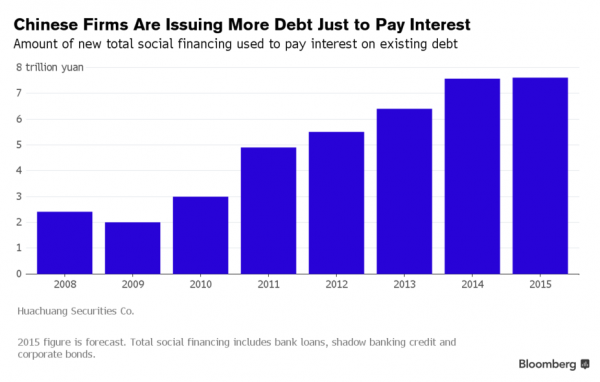By Tyler Durden at ZeroHedge
Downside risks to China’s economy are “relatively big” National Development and Reform Commission Chairman Xu Shaoshi admitted on Wednesday, but that’s not going to stop Beijing from swearing that China is growing at a near 7% clip.
At a press briefing, Xu revealed China’s growth target for the year and for the first time since 1995, it’s a range rather than a set number. The economy will grow between 6.5% and 7% in 2016, Xu said in a tacit admission that things are indeed slowing down for the engine of global growth and trade.
“It’s impractical to have a growth target being a number,” Iris Pang, a Greater China economist at Natixis SA told Bloomberg. “A range is more practical [as] it gives more room for policy makers to exercise their creativity to boost the economy.”
Right. And everyone knows the good folks at the NBS are very good at “exercising their creativity” when it comes to publishing economic data.
More notable than the growth target (which really doesn’t matter because GDP prints out of China are figments of Xi’s imagination) were Xu’s comments on the country’s acute overcapacity problem, defaults, and social unrest.
One narrative we’ve been keen to build on since last summer’s dramatic selloff in Chinese equities is the idea that between the stock market bust (Chinese equities have seen two bear markets in the space of a year) and the fallout from the sharp deceleration of the economy, the country’s beleaguered masses might well just rise up and revolt.
That might have seemed like hyperbole 12 months ago, but not now.
Indeed it was just yesterday when bulletins began making the rounds on Chinese social media calling for those defrauded in the Ezubao ponzi to stage nationwide protests.
In short, the villagers are restless and once the economic malaise begins to cause massive job losses, things may well come to a boiling point. Or, as we put it late last month after Li Xinchuang, head of China Metallurgical Industry Planning and Research Institute told Xinhua that eliminating excess capacity in the steel industry will cost 400,000 jobs and could fuel “social instability”: “…the most important topic facing China is how it will respond to the imminent labor market crisis as millions of workers are laid off either voluntarily, or as a result of bankruptcies of their employers.”
One option is for the state to simply keep bailing everyone out thus forestalling China’s Minsky Moment which will finally come when insolvent producers…
…can no longer borrow more money to service their existing debt…
But China desperately needs to deleverage. The country has a staggering $28 trillion in debt.
Kicking the can by perpetuating a system that seeks to avoid defaults at all costs destroys creative destruction and limits the extent to which the market can purge misallocated capital. And make no mistake: if there’s anything China has a whole helluva lot of, it’s misallocated capital.
While discussing this year’s growth target, Xu said China was prepared to take steps towards eliminating excess industrial capacity and dealing with unprofitable “zombie companies.“
Xu acknowledged that will mean rising joblessness. “Beijing’s attempts to curb overcapacity will increase unemployment in provinces with high output of steel and coal,” Reuters writes, recounting Xu’s comments at the briefing. “Job losses in provinces such as Shanxi, Heilongjiang and Hebei will rise.”
Xu didn’t say what the government planned to do to ameliorate the coming wave of job losses, but did say Beijing would not let joblessness plunge the country into social unrest. “Now the problems are worse than they were two years ago but the government has the ability to cope,” he insisted.
We shall see, in the weeks and months ahead, whether suddenly unemployed Chinese are in a forgiving mood when their “stability-obsessed” government begins the gradual and exceedingly painful process of unwinding one of the largest investment-driven industrial booms in the history of the world.




